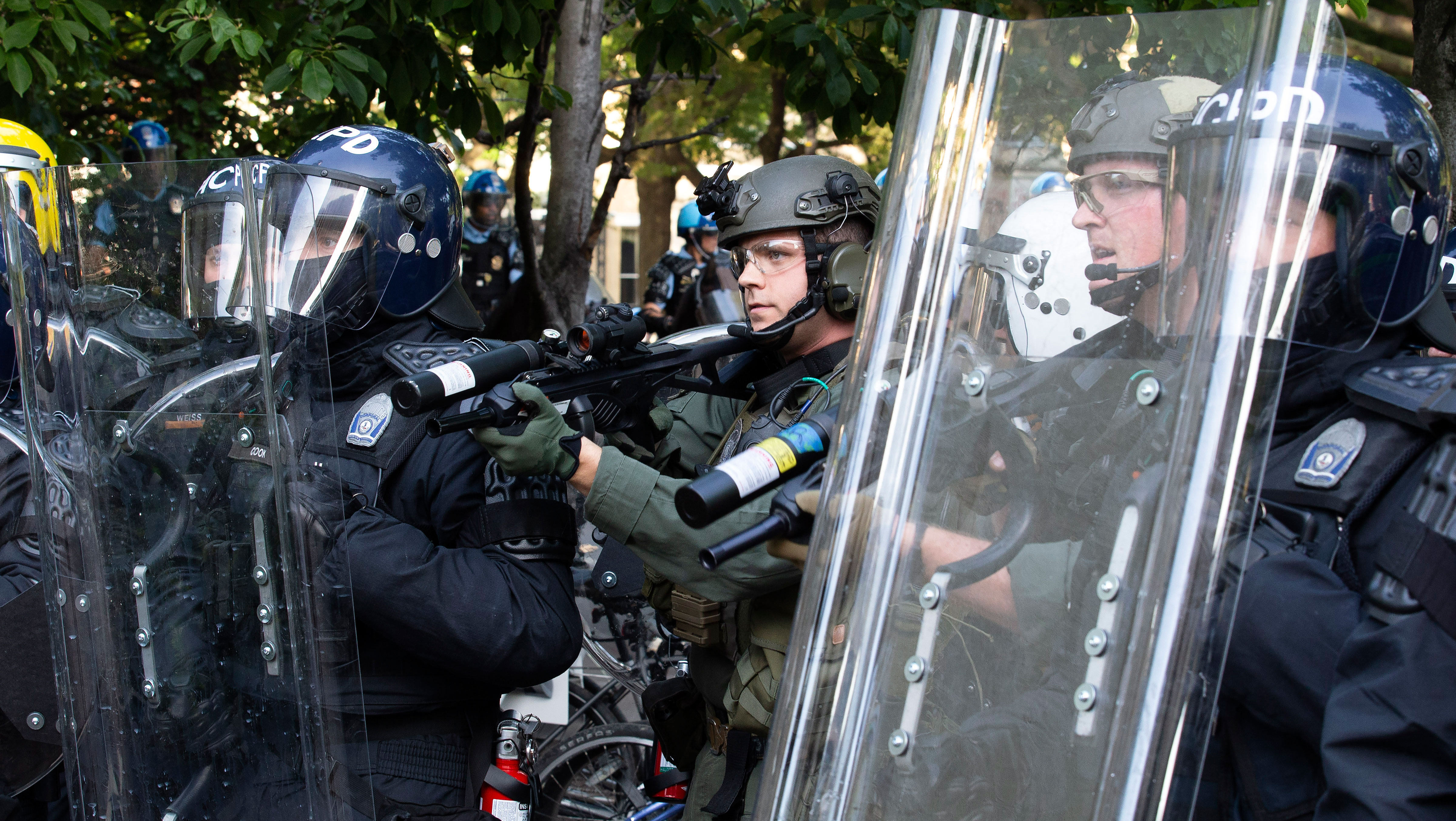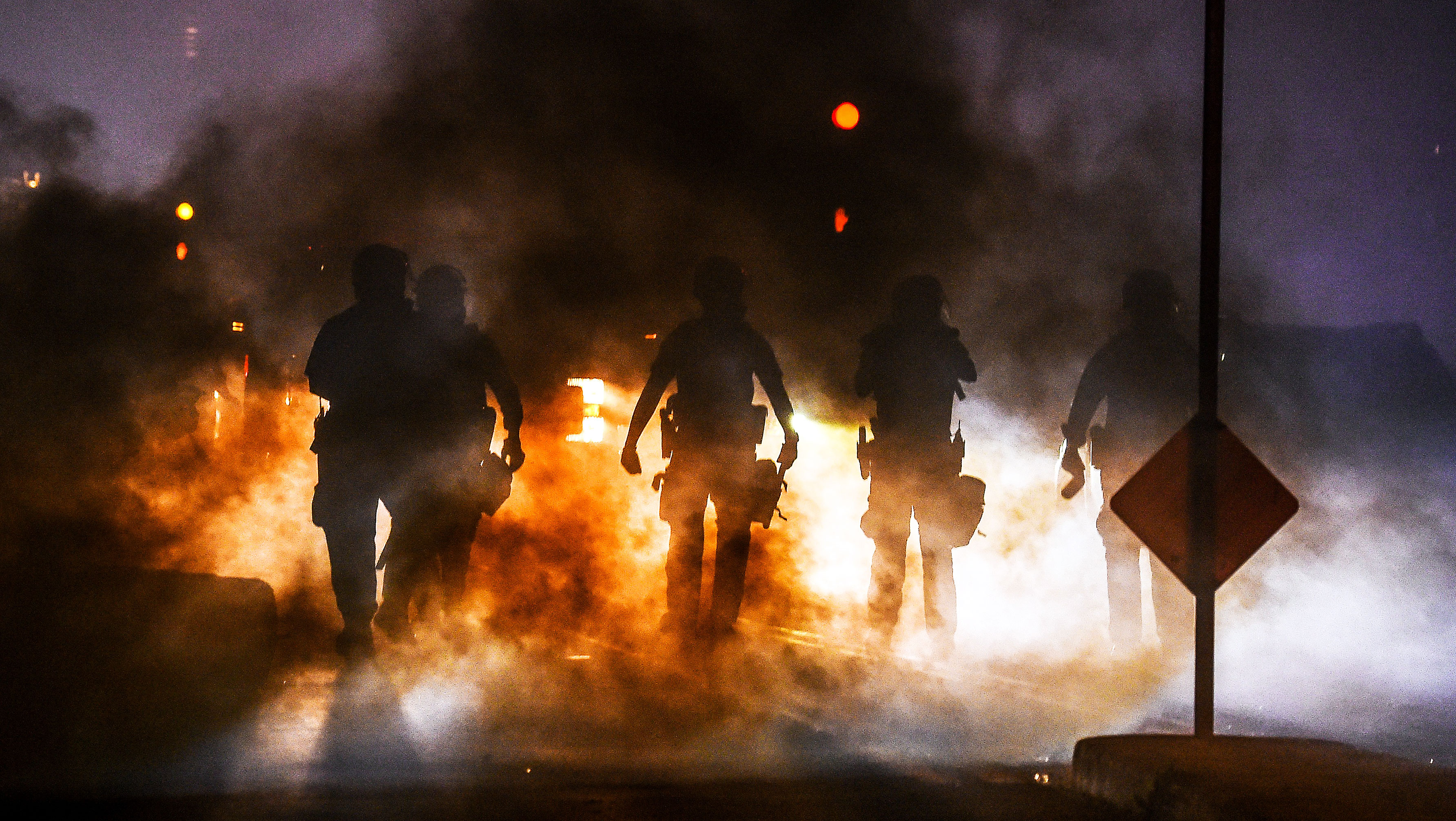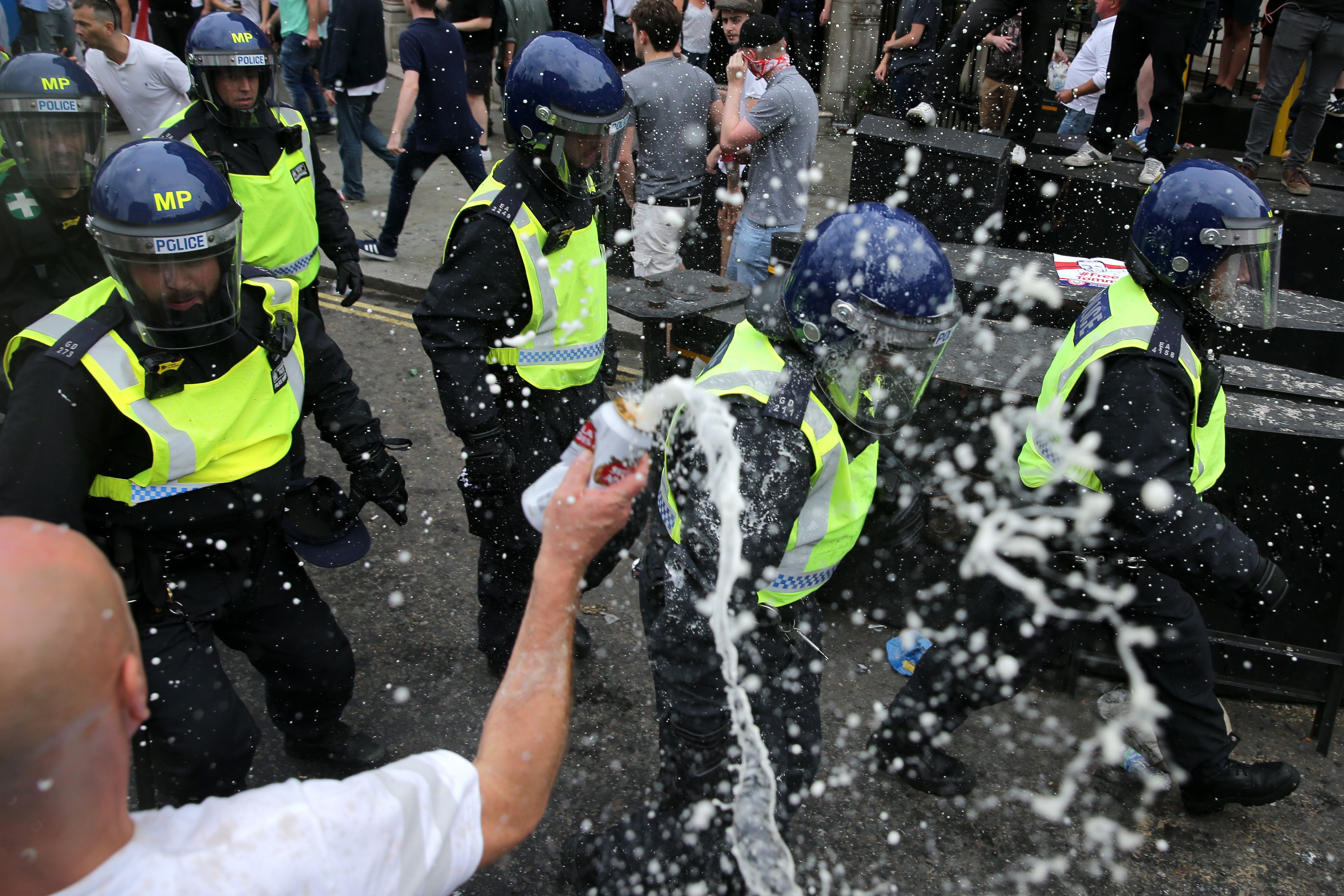George Floyd protests: how dangerous are US riot-control weapons?
Rubber bullets, tear gas and stun grenades can all cause serious injury and death

Donald Trump and his attorney general have been accused of violating the US Constitution by deploying force against peaceful protesters outside the White House.
The American Civil Liberties Union and other civil rights groups have filed a lawsuit in response to what they describe as a “shameless, unconstitutional, unprovoked, and frankly criminal attack on protesters” that “shakes the foundation of our nation’s constitutional order”.
Protests across the US sparked by the death of George Floyd have shone a spotlight on the country’s heavily militarised police forces and their crowd control tactics and arsenals.
The Week
Escape your echo chamber. Get the facts behind the news, plus analysis from multiple perspectives.

Sign up for The Week's Free Newsletters
From our morning news briefing to a weekly Good News Newsletter, get the best of The Week delivered directly to your inbox.
From our morning news briefing to a weekly Good News Newsletter, get the best of The Week delivered directly to your inbox.
The demonstrators outside the White House on Monday “were gassed, shot with rubber bullets and forcefully cleared” on the orders of Attorney General William Barr so that “Trump could walk to St. John’s church, the so-called Church of the Presidents”, The Guardian reports.
So what are the dangers of using these types of control methods?
Rubber bullets
Police forces across the US “have attempted to quell unrest spurred by the death of George Floyd by firing rubber bullets into crowds, even though five decades of evidence shows such weapons can disable, disfigure and even kill”, reports NBC News.
A free daily email with the biggest news stories of the day – and the best features from TheWeek.com
Also known as baton rounds or kinetic impact projectiles, rubber bullets often contain a metal core.
And according to a 2017 study published in the British Medical Journal, they can be lethal. The review of medical reports found that of 1,984 people struck by rubber bullets, 53 were killed and a further 300 suffered permanent disability.
The study’s authors concluded that rubber bullets “do not appear to be appropriate weapons for use in crowd-control settings”.
Tear gas and pepper spray
“Law enforcement officials shy away from describing crowd-dispersing chemical tools as tear gas,” says the Associated Press fact-checking team. “It evokes police gassing citizens or the horrors of war. But giving those tools a more antiseptic name does not change the reality on the ground.”
Trump has denied that tear gas was used outside the White House this week, but police involved in the operation “acknowledged deploying a pepper compound, which the CDC [Centers for Disease Control] and other scientific organisations list as one form of tear gas”, the news agency reports.
–––––––––––––––––––––––––––––––For a round-up of the most important stories from around the world - and a concise, refreshing and balanced take on the week’s news agenda - try The Week magazine. Start your trial subscription today –––––––––––––––––––––––––––––––
The Handbook of Toxicology of Chemical Warfare Agents says tear gases come in many forms, including CS gas and capsaicin-based pepper sprays, all of which “cause irritation of mucous membranes of the eyes, respiratory tract, and skin”.
Although rarely lethal in the short term, these chemical agents can “cause long-term harm by making people more susceptible to contracting influenza, pneumonia and other illnesses”, ProPublica reports. All types of tear gas are “banned internationally in warfare, yet they are still legal for domestic police forces”, Vox notes.
–––––––––––––––––––––––––––––––For a round-up of the most important stories from around the world - and a concise, refreshing and balanced take on the week’s news agenda - try The Week magazine. Start your trial subscription today –––––––––––––––––––––––––––––––
Tasers
The electric stun-guns known as Tasers are not usually used for crowd control, but US police have fired them in isolated incidents connected with the George Floyd protests.
“In Atlanta, police officers enforcing a curfew stopped two college students in a car, fired Tasers on them and dragged them out of the vehicle,” The New York Times reports.
Intended as a non-lethal alternative to firearms, Tasers have nevertheless resulted in more than 1,000 deaths in the US alone, according to a Reuters investigation. In 2009, after several lawsuits, manufacturer Taser International Inc “warned police to avoid firing its stun gun’s electrified darts at a person’s chest”, the news agency reports.
Flash-bang grenades
Also known as stun grenades, flash-bangs burst with a 160-180 decibel explosion intended to disorientate and repel rioters. At short range they can be deadly, causing burns and death, although most such documented cases involve indoor use during police raids rather than crowd-control situations.
Even outside, the blast wave from the grenade can damage eardrums and lung tissue. “The North Carolina Supreme Court has even declared them a weapon of ‘mass death and destruction’,” Vox reports.
-
 Alaa Abd el-Fattah: should Egyptian dissident be stripped of UK citizenship?
Alaa Abd el-Fattah: should Egyptian dissident be stripped of UK citizenship?Today's Big Question Resurfaced social media posts appear to show the democracy activist calling for the killing of Zionists and police
-
 Biggest political break-ups and make-ups of 2025
Biggest political break-ups and make-ups of 2025The Explainer From Trump and Musk to the UK and the EU, Christmas wouldn’t be Christmas without a round-up of the year’s relationship drama
-
 Why 2025 was a pivotal year for AI
Why 2025 was a pivotal year for AITalking Point The ‘hype’ and ‘hopes’ around artificial intelligence are ‘like nothing the world has seen before’
-
 George Floyd protests: how Russia and China are exploiting US race riots
George Floyd protests: how Russia and China are exploiting US race riotsIn Depth Rival superpowers deflecting criticism by pushing propaganda about Western hypocrisy
-
 Reaction: Trump threatens George Floyd protesters with military force
Reaction: Trump threatens George Floyd protesters with military forceIn Depth Violence spreads across US following police killing of black man in Minneapolis
-
 Attacks on emergency workers in five shameful statistics
Attacks on emergency workers in five shameful statisticsIn Depth MP decries ‘national scandal’ as new law doubles prison time for assailants